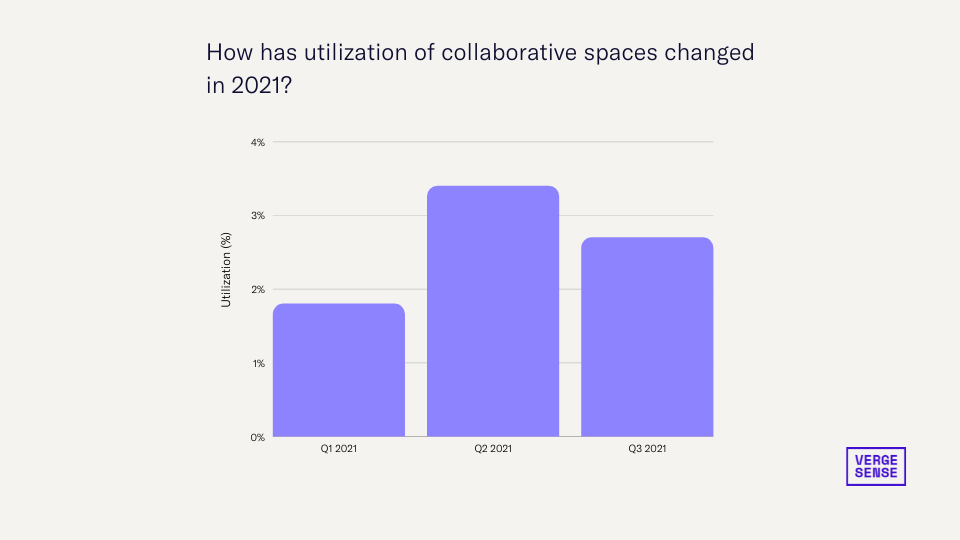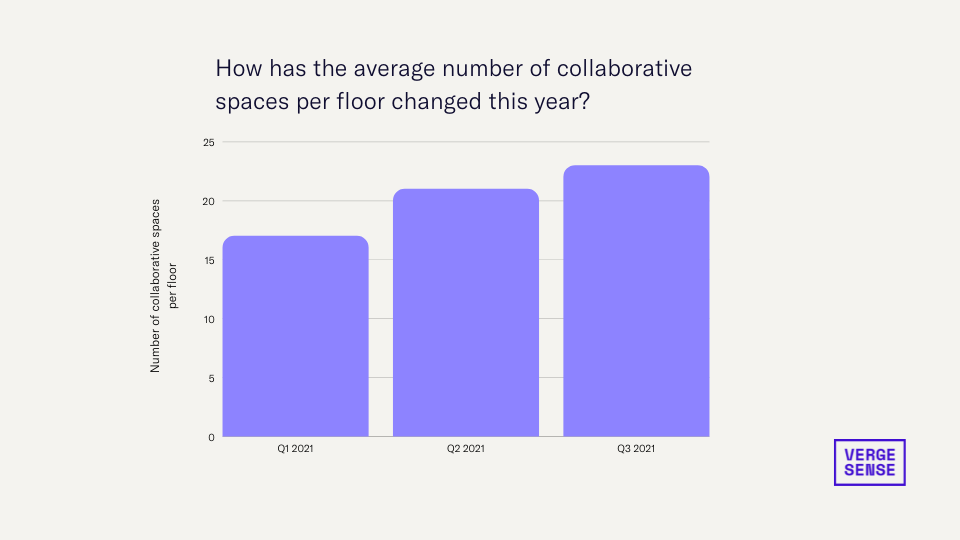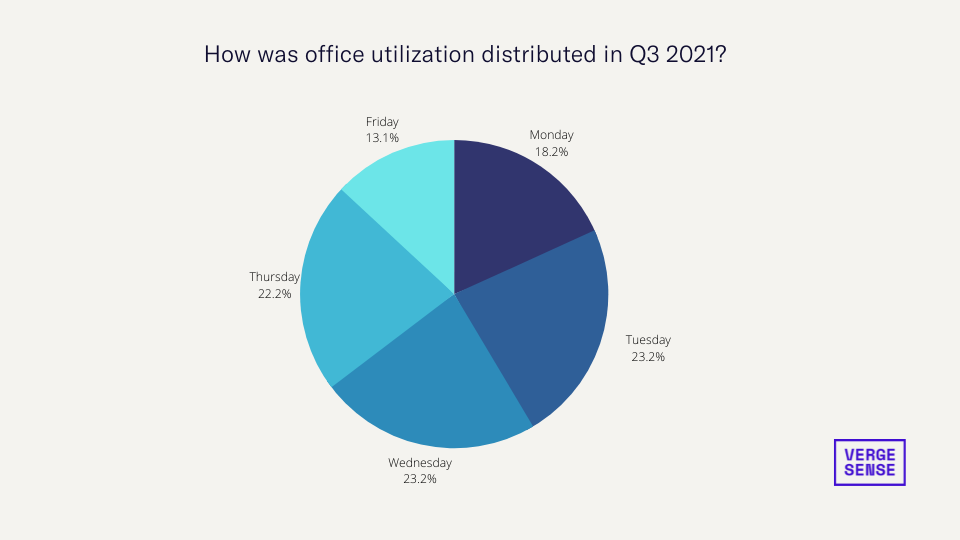Office Utilization has Increased 135% since the Start of the Pandemic

VergeSense is the industry leader in providing enterprises with a true understanding of their occupancy and how their offices are actually being used.
Today we’re excited to launch VergeSense's State of the Hybrid Workplace Report (Q3 2021). The report reveals insight into how office utilization is shifting across the pandemic and what major enterprises are doing to optimize their workplaces for greater collaboration, productivity and space planning. The full report is available here for download.
It is undeniable that the pandemic has impacted office utilization globally. But did you know that even pre-covid, offices were being vastly underutilized? This signals that pandemic or not, unused office spaces are creating enormous sunk costs, and impede workplace optimization. As enterprises are returning to the office, CRE leaders and workplace executives are leaning increasingly on data-driven insights on office utilization to ensure that their real estate portfolios are optimized for a frictionless return to work.
To help CRE leaders navigate this uncertain return to work transition, VergeSense analyzed workplace utilization data drawn from over 40M square feet from across the world, covering various industries and enterprises. We average utilization across company working hours only. We distilled this vast data into key findings to equip you with the tools to make data-informed decisions regarding your workplace strategy.
Key Findings from the Report:
Finding #1: Office Utilization has increased by 135% since the start of the pandemic (Q2 2020 to Q3 2021)
The increase in office utilization since the start of the pandemic can be attributed to the gradual transition back to the office, coupled with improved safety measures in the workplace. These measures range from mask mandates, to testing and requesting for employees’ vaccination cards. This key finding is an optimistic one- as office fell by 86%, from Q4 2019 to Q3 2021. However, there is still distance to travel, as utilization remains 80% down from pre-pandemic days.
Finding #2: Space planners should expect 1 collaboration space for every 2 desks (Q3 2021)
Prior to the pandemic, space planners allocated 1 collaboration space for every 6 desks (Q4 2019). Today, we observe a new ratio becoming the standard: 1 collaboration space for every 2 desks (Q3 2021). This indicates that offices are changing, and CRE leaders are making big investments in spaces that bring employees together and support productivity. This is likely to have a huge impact on workplace design standards moving forward.
Finding #3: Utilization of collaborative spaces has increased by 50% since the start of the year
Since the start of the year, utilization of collaborative spaces has increased by 50%, with a slight 13% dip from Q2 to Q3 2021. This decline is likely temporary, and signals that the addition of collaboration spaces to the new hybrid workplace is outpacing employees' return to office. Once safety concerns around the Delta Variant are quelled and employees begin returning to work with more confidence, usage of these spaces will align with capacity.

Finding #4: The average number of collaborative spaces per floor has increased by 35% since Q1 2021, however the average number of individual spaces per floor has stayed the same.
The fact that collaborative spaces in the office have increased by 9.5% in the past quarter itself, suggests an anticipated rise in collaboration in the workplace, and subsequently, the growing demand for agile spaces and tools.

Finding #5: In Q3 2021, 46% of office utilization took place on Tuesdays and Wednesdays, making these the most frequented work-from-office days

Additionally, the least frequented days were Friday and Monday, in that order. Having an understanding of the busiest days in the office helps employees plan their hybrid work experience on their terms, with safety and comfort at the forefront, while reducing unpredictability around attendance.
How Do These Insights Inform the Future of Work?
VergeSense’s State of the Hybrid Workplace Report found that more and more businesses are embracing hybrid work, and are investing in collaborative office spaces. Real estate leaders are placing agility at the forefront of their workplace strategy, as the workplace continues to evolve alongside employee needs and demands.
As the role of the office continues to change, it is crucial that your workplace strategy is founded on data rather than assumptions. Having a comprehensive overview of what steps businesses are taking to optimize their real estate portfolios is a sound starting point. To understand your spaces better, book a demo with us today.